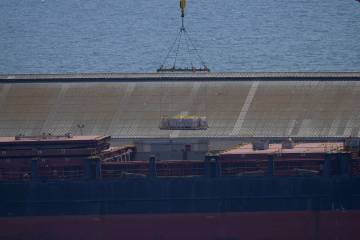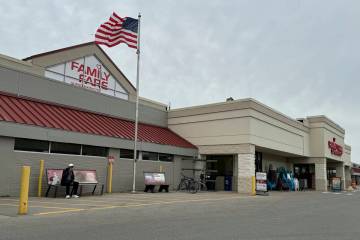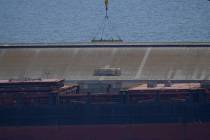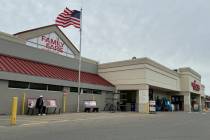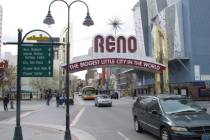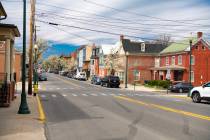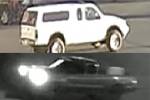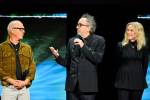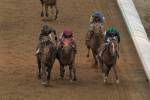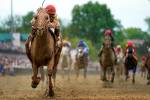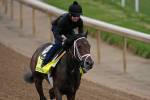61 horses died in ’88 at test site
While federal agencies continue to investigate the source of nitrate contamination that fouled a watering hole where 71 wild horses died this summer at the Tonopah Test Range, records from the Bureau of Land Management confirm a de-icing compound caused a similar die-off of 61 horses there in 1988.
"After a detailed autopsy ... we determined that the cause of death of the 61 wild horses was due to ammonia toxicity. It occurred from the horses drinking rinse water contaminated with 600 to 1,000 pounds of urea washed from a truck by a REECo contractor," reads the Nov. 8, 1988, "findings" summary.
The report was obtained this month under the Freedom of Information Act by longtime Las Vegas resident Kevin Dye.
He sought the records because he fears that the drinking water supply could be tainted with toxic chemicals the Air Force used. He also said the 1988 die-off could be related to the one that occurred in July because of the quantities and distribution of the de-icing compound.
The die-offs occurred within a few miles of each other.
Dye, a former Air Force technical sergeant, worked from 1990 to 1998 at the Tonopah Test Range, 210 miles northwest of Las Vegas.
He alerted the Environmental Protection Agency in 1996 about dumping of urea, an ammonium nitrate compound that was used for de-icing aircraft and runways at the Tonopah Test Range and other airfields in the Nellis range complex.
According to the 1988 report by the BLM's wild horse specialist and a veterinarian, fluids from the eyes of two horse carcasses contained "very toxic" ammonia levels that were 1,000 times above normal. Ammonia is a by-product of urea.
The report noted that on or about Nov. 2, 1988, workers for Reynolds Electrical and Engineering Co., or REECo, rinsed out up to 1,000 pounds of urea from a truck using water drawn from a reservoir near a complex of buildings. The solid urea was made by CPEX Pacific Inc.
"The runoff formed large puddles or catches of water over a large area surrounding the fenced reservoir," the report reads. "The caliche layer in the soil and low permeability allowed the water to pool and remain in the area. We noted a few dead and dying birds (horned larks) near the puddles."
This year in July, the carcasses of 71 wild horses were found at a different location on the test range, prompting federal agencies, including the Bureau of Land Management and the Air Force, to investigate.
In August, the BLM issued a statement saying nitrate toxicity was the most likely cause of death. Levels of nitrates in water samples from a pond the horses drank from were 66 times in excess of safe drinking water standards for humans and 30 times acceptable levels for livestock.
The pond has since been fenced off. It is in an area used by Sandia National Laboratories, which operates the Tonopah Test Range under an Air Force permit with the National Nuclear Security Administration. Sandia dug the pond in the range's main dry lake bed for a test program more than 20 years ago.
Dye said Wednesday that he sought the BLM's 1988 report "because the EPA refused to address the issue ... even after I explained to them that tons and tons of the chemical were dumped on the ground and never recovered."
"That's a big sticking point," he said. "It was dumped on the ground and never recovered. After all these years, it's finally catching up with us.
"My biggest fear is that it is going to get in the drinking water," Dye said.
On Aug. 24, Sen. Harry Reid, D-Nev., said he couldn't "turn a blind eye" on the recent wild horse deaths and sent letters to Interior Secretary Dirk Kempthorne and Defense Secretary Robert Gates requesting "a full and thorough investigation be undertaken."
"There are strong concerns in Southern Nevada that these deaths are the result of serious negligence in the management of the test range and wild horse herds in the area," Reid wrote.
After Reid's letter, the BLM launched an effort to test soil samples and conduct water tests on springs in the area to find the source of the nitrate contamination.
On Sept. 28, Air Force Secretary Michael Wynne replied to Reid in a letter, saying the source of the contamination was still under investigation by a team from Nellis Air Force Base, the BLM, Nevada environmental officials and the Department of Energy's National Nuclear Security Administration.
"Analysis of the samples will be completed by late October," Wynne wrote.
But as of Wednesday, Reid's spokesman, Jon Summers, said his office hasn't received any additional information from the Air Force.
A call to the BLM's Las Vegas field office manager was not returned this week.
In May 1989, less than a year after the 61 wild horses were poisoned from contamination linked to urea, Reynolds Electrical and Engineering Co. reached a settlement with Nevada's Department of Conservation and Natural Resources after state environmental officials found that REECo illegally discharged urea into the state's waters.
REECo disputed the finding by the state Division of Environmental Protection but agreed to pay $15,000 to the Nevada Commission for the Preservation of Wild Horses and work with the BLM to develop three water sources on the Nellis range.
Contact reporter Keith Rogers at krogers@reviewjournal.com or (702) 383-0308.






